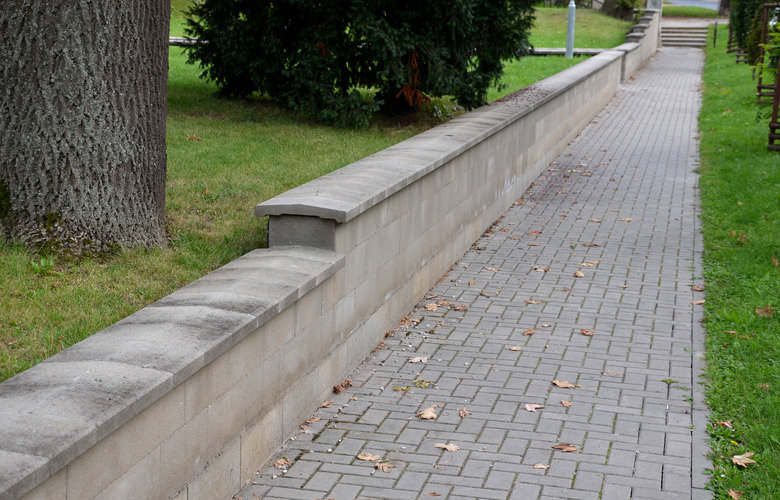How To Paint Exterior Concrete Retaining Walls
We may receive a commission on purchases made from links.
Concrete retaining walls are an essential component of some properties, but they're not always the most attractive structures. You might want to paint an exterior retaining wall to improve its appearance and to protect it from the elements. There are two main factors to keep in mind when preparing to paint an exterior concrete retaining wall: choosing the right paint and preparing the concrete properly.
Things Needed
-
Hydraulic cement/elastomeric caulk (optional)
-
Power washer (optional)
-
Drop cloths/old sheets
-
Exterior concrete paint (masonry paint)
-
Mixing stick
-
Stepladder (optional)
How to Paint an Exterior Concrete Retaining Wall
1. Repair Major Issues First
Before you set about painting your retaining wall, it's important to fix any underlying problems first. Painting over problems, such as cracks, sags, or holes, won't make them go away and may just mean your paint job is wasted when these issues need to be fixed later. Hydraulic cement and elastomeric caulk can be used to fix minor cracks and surface gaps. If you're in doubt or if there are larger problems, it's best to call a professional.
2. Clean the Wall Thoroughly
If the wall is new and/or in good condition, wash it with a scrubbing brush and a cleaner designed to wash outdoor surfaces. If the wall is older or is spotted with moss, lichen, or mold, give it a thorough wash with a power washer before you begin painting. Ensure the surface is dry before you start painting (and don't paint on a rainy day).
3. Lay Drop Cloths
Before you get to the priming and painting stages, lay some drop cloths or old sheets in front of the wall. You don't want the ground in front of the wall to get splattered.
4. Paint on a Primer
Add a coat of primer before painting. Choose a primer that's designed for exterior concrete surfaces. These will even out the surface and fill pores in the concrete that can soak in moisture. Follow the instructions on your particular brand of primer. Many suggest painting two coats.
5. Choose the Right Paint
It's important to choose the right paint because using one that isn't intended for exterior concrete retaining walls could lead to moisture being trapped, which can seriously damage your wall and cause more problems later. Regular house paint can crack and peel on concrete, so it isn't a good choice. Latex exterior paints containing pesticides and fungicides are best for painting a concrete retaining wall. Masonry paints are also a good option, as they're thicker than regular exterior paint but expand and contract with concrete. Masonry paints may be oil-, water-, or latex-based. The paint should also be water- and temperature-resistant.
6. Paint the Edges First
Once you're ready to paint, stir the paint with a mixing stick and pour some into a paint tray. With a smaller paintbrush, begin by painting around the edges of the retaining wall. This will give you the most precision and make the paint job look neater. If your wall is higher than you can reach, use a stepladder to get to out-of-reach places.
7. Paint the Whole Wall
Using a paint roller, paint the remaining surface of the retaining wall. You might need to use a long-handle roller to reach some parts. Paint in the same direction to get an even coat.
Leave the first coat to dry for one to two days before applying a second coat. Some paint instructions might suggest applying a third coat, especially if waterproofing is a concern.
